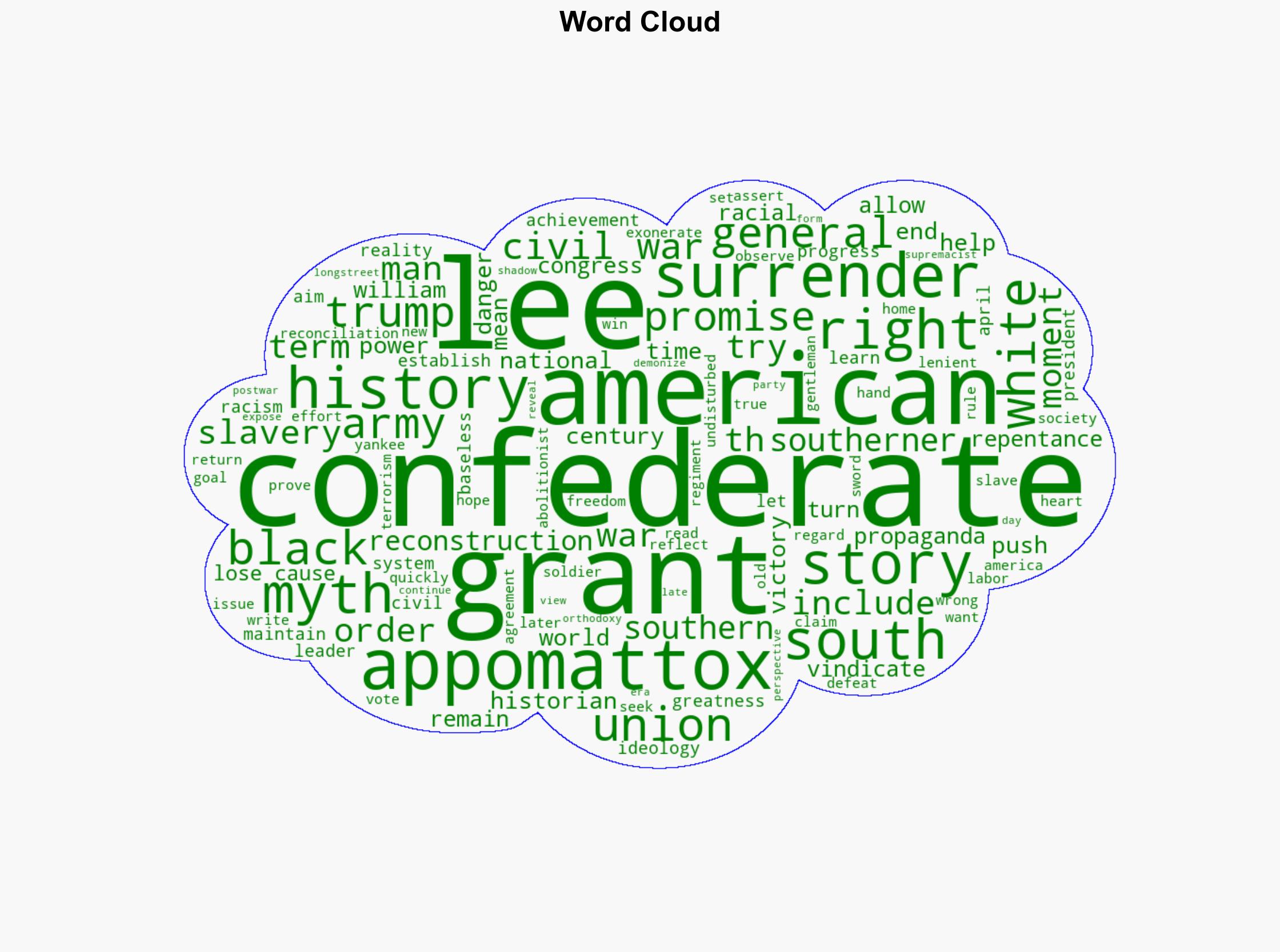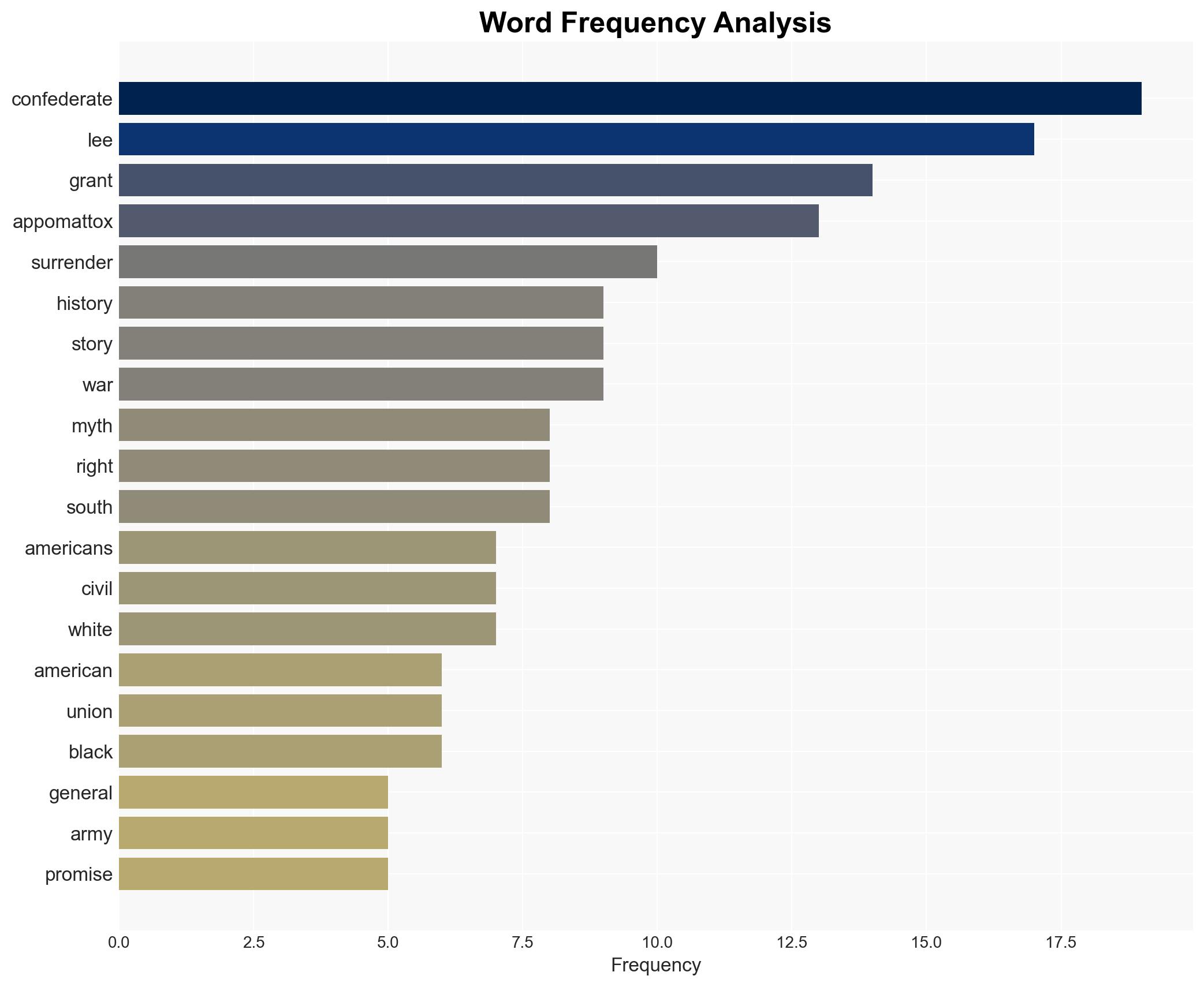The True Story of Appomattox Exposes the Dangers of Letting Myths Replace History – Time
Published on: 2025-04-09
Intelligence Report: The True Story of Appomattox Exposes the Dangers of Letting Myths Replace History – Time
1. BLUF (Bottom Line Up Front)
The narrative surrounding the surrender at Appomattox has been mythologized, overshadowing the complex realities of the event. This myth perpetuates an incomplete understanding of American history, potentially influencing contemporary perspectives on national identity and historical accountability. The report highlights the importance of addressing historical inaccuracies to prevent the perpetuation of misleading narratives that can impact societal values and policy decisions.
2. Detailed Analysis
The following structured analytic techniques have been applied for this analysis:
General Analysis
The surrender at Appomattox is often romanticized as a moment of noble reconciliation between Robert Lee and Ulysses Grant. However, the historical context reveals a more complex interaction, with Grant’s terms reflecting a strategic decision rather than a gesture of mutual respect. The mythologized version of events has obscured the underlying issues of racial inequality and the lack of Confederate repentance. This narrative has been used to promote a sanitized version of history, which can influence current societal attitudes towards race and national identity.
3. Implications and Strategic Risks
The perpetuation of historical myths poses risks to national cohesion and educational integrity. By failing to address the complexities of historical events, there is a risk of fostering an environment where misinformation can thrive. This can lead to polarized societal views and hinder efforts to address systemic issues such as racial inequality. Additionally, the romanticization of historical events can impact diplomatic relations, as it may influence national narratives and foreign policy decisions.
4. Recommendations and Outlook
Recommendations:
- Encourage educational institutions to incorporate comprehensive and accurate historical narratives into their curricula.
- Promote public discourse that challenges historical myths and encourages critical examination of past events.
- Support initiatives that aim to reconcile historical narratives with contemporary values of equality and justice.
Outlook:
In the best-case scenario, increased awareness and education could lead to a more informed public, capable of critically engaging with historical narratives. The worst-case scenario involves continued polarization and the entrenchment of historical myths, potentially exacerbating societal divisions. The most likely outcome is a gradual shift towards more nuanced historical understanding, driven by educational reforms and public discourse.
5. Key Individuals and Entities
The report mentions significant individuals such as Robert Lee, Ulysses Grant, William McCoslin, and William Nelson Pendleton. These individuals played pivotal roles in the historical events discussed, and their actions and perspectives are crucial to understanding the broader implications of the Appomattox narrative.




